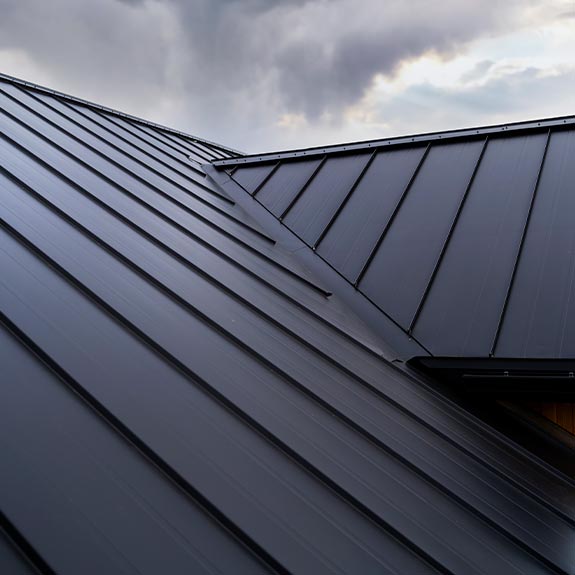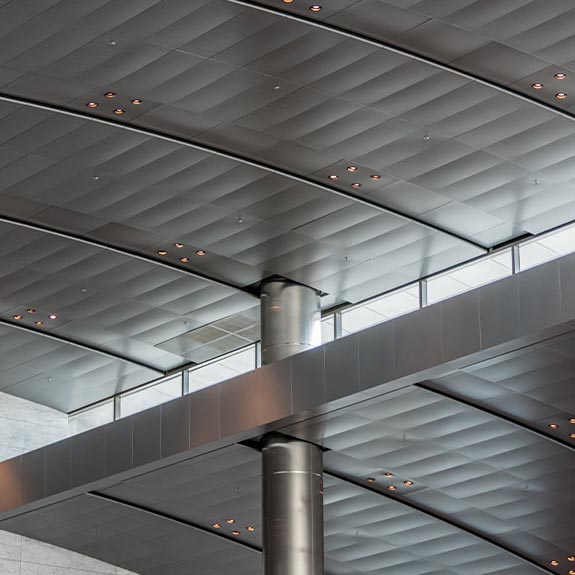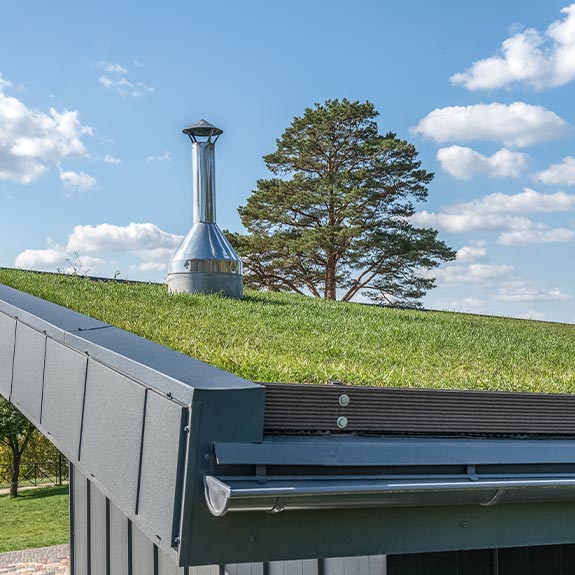Why is the type of roof crucial in a modern house?
The roof is much more than just a simple covering. It acts as the first line of defense against the elements, but it also plays a determining role in the aesthetics, functionality and sustainability of a home. Good roof design can improve energy efficiency by reducing heat gain or loss, and allow for the integration of technologies such as solar panels or green gardens. In addition, it is an architectural element visible from the outside, which means it directly influences the visual personality of the house. Choosing the right roof means thinking about comfort, style, durability and the future.
General classification of ceilings: interior vs. exterior
There are two main types of roofs: exterior and interior. Exterior roofs are designed to withstand the elements: heavy rains, scorching sun, snow or high winds. In addition, their shape and materials reflect the overall architectural character, whether minimalist, rustic or avant-garde. On the other hand, interior ceilings offer the opportunity to play with textures, colors, finishes and lighting, contributing to the emotional atmosphere of the home. A well-designed ceiling in the interior can visually expand a space, make it more welcoming or reflect a modern aesthetic.

Wooden roofs: natural warmth in any space
Wood is synonymous with timeless elegance. In ceilings, it creates a cozy and organic atmosphere, ideal for both rural homes and modern interiors with a rustic touch. This material acts as an excellent thermal and acoustic insulator, which improves the overall comfort of the home. From exposed beams to plain or geometrically patterned paneling, the versatility of wood is endless. With proper treatments, it is resistant to moisture and can last for decades.

Flat roofs: contemporary elegance and functionality
Flat roofs are a popular choice in contemporary architecture. Their greatest advantage is the possibility of being used as additional spaces: roof gardens, social terraces, or areas for solar panels. However, they require proper waterproofing and efficient drainage systems to avoid leaks. Visually, they convey a minimalist and clean aesthetic, ideal for those seeking a modern, functional and sustainable home.
Gable roofs: balancing tradition and modernity
Gable roofs are a classic. They are composed of two inclined planes that facilitate the evacuation of water, preventing leaks and snow accumulation. Although they are typical of traditional houses, today they are reinterpreted with modern materials such as metal or flat tiles to be integrated into contemporary projects. Their shape provides an additional useful space in the attic or between roofs, which can be used as a cellar, office or extra room.
Pitched roofs: total coverage and wind resistance
With four sloping skirts towards the walls, this type of roof offers maximum protection against wind and rain. It is ideal for areas with adverse weather conditions. In addition to being functional, its symmetrical design brings visual harmony to detached houses. They can be combined with modern or traditional materials to create an aesthetic balance between robustness and sophistication.
Clay tile roofs: tradition adapted to today’s design
Clay tiles are a classic of Mediterranean and colonial architecture. Today they are revalued for their durability, natural thermal insulation and warm aesthetics. They combine perfectly with materials such as stone, concrete or wood, adapting easily to current designs. In addition, their ability to reflect heat makes them ideal in hot climates.
Metal ceilings: industrial minimalism and durability
Metal roofs have gained prominence in modern and industrial homes due to their strength, low maintenance and clean aesthetics. Manufactured in galvanized steel, aluminum or copper, they can be flat or corrugated to facilitate drainage. They can also be combined with thermal and acoustic insulation, guaranteeing efficiency and comfort.

Polycarbonate roofs: luminosity and avant-garde style
Polycarbonate is an excellent option for those seeking natural light without losing protection. It is commonly used in terraces, roofed patios and interior gardens. There are versions with UV protection and thermal control, which allows to enjoy luminous spaces without overheating. In addition, its lightness facilitates installation and its translucent finish adds a modern touch.
Glass ceilings: sophistication and visual spaciousness
Glass ceilings represent luxury and connection with the environment. They are ideal for rooms such as living rooms, dining rooms or relaxation spaces where a unique visual experience is sought. The use of laminated or tempered glass ensures safety and insulation. They can incorporate anti-reflective treatments or solar filters for greater comfort. They also allow you to enjoy the starry sky without leaving your home.
PVC ceilings: low cost with a modern finish
PVC is one of the most versatile materials for interiors. It is economical, moisture resistant, easy to clean and comes in a wide variety of designs, colors and textures. It is perfect for kitchens, bathrooms or commercial spaces. In addition, its installation is fast and its maintenance is almost null, which makes it a practical and aesthetic solution.
Interior ceilings with colored or glossy finishes
Glossy or satin finishes on ceilings can radically change the perception of space. They provide visual spaciousness, especially in small rooms or rooms with little natural light. They are ideal on high ceilings and are enhanced by thoughtful indirect lighting. Reflective paints, lacquers or glossy panels offer a clean, modern look.
Wallpapered or textured ceilings: the new fifth wall
The ceiling becomes the protagonist when wallpaper, moldings or 3D textures are applied. This trend revalues the “fifth wall” as an expressive surface. It is a creative and accessible way to give personality to a room, without the need for complicated works. Ideal for bedrooms, living rooms or artistic spaces looking for originality.
Green roofs and suspended plant ceilings
Green roofs improve insulation, absorb CO₂, and increase urban biodiversity. They also beautify the home and reduce the heat island effect. Indoors, hanging plants installed on roof structures bring freshness, life and a bohemian air. This solution is not only decorative, but also functional, improving indoor air quality.

Quick comparison of options by style and use
| Roof type | Featured style | Main functionality |
|---|---|---|
| Green roofs | Ecological and modern | Insulation, sustainability |
| Polycarbonate roofs | Vanguard | Natural lighting, lightness |
| Pitched roofs | Classic and robust | Maximum weather protection |
| Glossy ceilings | Elegant minimalist | Indoor visual spaciousness |
| Metal ceilings | Modern industrial | Durability, low maintenance |
Tips for choosing the ideal roof type
Before deciding, analyze the climate where you live, the orientation of the house, the use you will make of the space under the roof, and your budget. A good design should consider proper drainage, durable materials and an aesthetic that harmonizes with the rest of the house. Consult with specialized architects or designers who can help you make informed and personalized decisions.
Common mistakes when choosing modern ceilings
Among the most frequent mistakes are: not considering rainwater drainage, choosing inappropriate materials for the local climate, or forcing styles that do not match the rest of the construction. It is also common not to foresee future maintenance or to overload the roof with decorative elements without a previous study. Avoiding these mistakes saves costs and headaches in the long run.
What is the most economical type of roof for a modern house?
PVC and metal sheets are the most economical options without sacrificing modern design.
What type of roof is best for hot areas?
Tile roofs, green roofs and materials such as wood are excellent thermal insulators.
Can I install a green roof on any house?
Yes, but it requires a structure prepared to support additional weight and ensure adequate waterproofing.
Is it safe to use glass on the roof?
Yes, if tempered or laminated safety glass is used, it is strong and durable.


